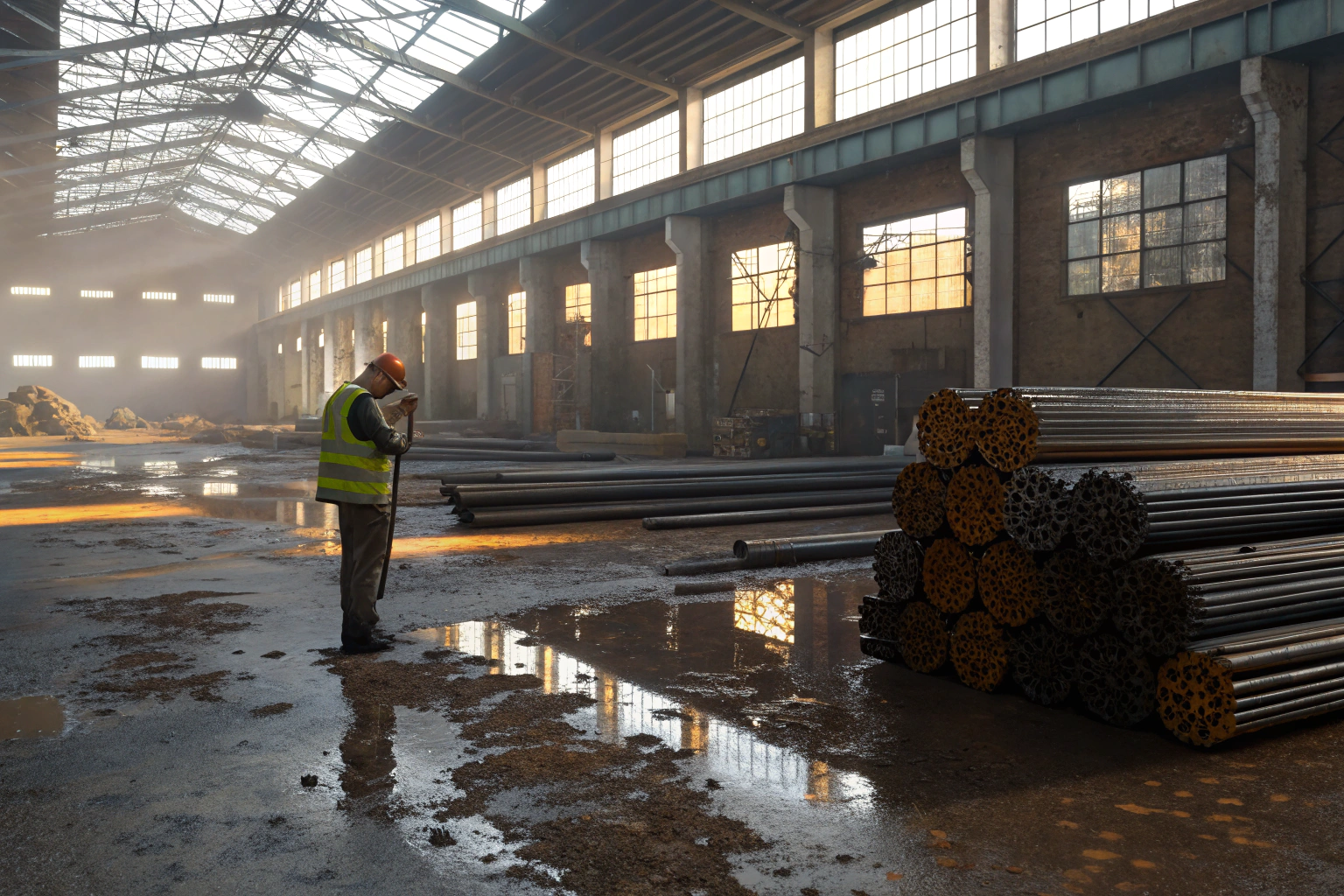
I’ve seen buyers skip factory visits to save a few thousand dollars—only to lose tens of thousands later fixing avoidable mistakes.
Yes — visiting a factory in person is usually the most reliable way to verify capabilities, assess quality systems, and build supplier accountability before importing custom metal parts from Vietnam.
Let me break down the value of being on-site, and what a virtual audit just can’t replace.
What advantages do in-person visits offer?
I’ve done audits where the brochures looked perfect, but when I arrived, I found rusty machines and zero quality documentation.
An in-person visit helps you verify real capabilities, observe production culture, inspect documentation, and uncover risks that aren’t visible from video calls or certifications.

Key Benefits of Visiting the Factory
| Benefit | Description |
|---|---|
| Equipment Validation | See if the factory really owns the machines they claim to have |
| Staff Skill Observation | Watch how workers operate CNCs, welding tools, or QC equipment |
| Quality System Audit | Check SOPs, SIPs, inspection records, and calibration documents |
| Environmental & Safety Check | Spot poor material storage, safety violations, unclean workspaces |
| Relationship Building | Strengthen trust and improve future collaboration |
| Real-Time Negotiation | Resolve pricing, timelines, and order terms more effectively in person |
Industry groups like the American Society for Quality 1 emphasize that in-person audits reveal hidden risks far better than document-only reviews. I always walk through the production line, from incoming material inspection to packaging. This shows if inspection points exist, gauges are available at workstations, and whether process control exists beyond just talk.
Can virtual audits substitute factory visits?
Many buyers tried to replace visits with Zoom tours during the pandemic—and it worked to a point. But I also know of clients who approved a factory virtually, only to discover later that real production was outsourced elsewhere.
No — while virtual audits can screen out weak candidates, they can’t replace the depth and certainty you gain from walking the shop floor yourself.

Comparison: Virtual Audit vs In-Person Visit
| Criteria | Virtual Audit | In-Person Visit |
|---|---|---|
| Machine Verification | Limited (may show best parts) | Full access, all areas |
| SOP / Quality Docs Review | PDF screenshots only | Review live records onsite |
| Real-Time Production | Often staged or skipped | Observe real production flow |
| Facility Hygiene / Safety | May skip “bad” corners | Inspect all spaces freely |
| Equipment Condition | Hard to judge via video | Easy to observe wear, rust |
| Raw Material Storage | Rarely shown in detail | Check actual inventory system |
| Subcontractor Use | Often hidden | Easier to detect on-site |
Certification bodies like ISO 9001 auditors 2 warn that remote audits may miss red flags unless followed up with site checks. If you truly can’t visit, hire a trusted third-party inspection service 3 with full photo/video documentation of production areas, tool rooms, labs, and storage.
How to plan an effective factory visit?
I’ve seen people waste their factory visit chatting in meeting rooms, drinking tea, and walking away with zero technical insight.
To make your visit effective, you need a structured plan with a checklist covering equipment, people, quality systems, materials, and process controls.

Factory Visit Planning Checklist
| Area to Inspect | What to Look For |
|---|---|
| CNC/Stamping/Welding Equipment | Brand, condition, serial #, operating status |
| Measurement Tools | Availability at stations, calibration status |
| Quality Control Procedures | SOPs, SIPs posted, inspection logs, NCR records |
| In-House Lab | Key equipment (CMM, hardness tester, OES), recent calibration |
| Raw Material Warehouse | Batch labeling, FIFO, rust prevention, traceability system |
| Molds / Fixtures / Tooling Room | Maintenance log, storage condition, labeling |
| Staff Competence | Observe operator behavior, see if training logs exist |
| Production Flow | Whether WIP is controlled, marked, and traceable |
| Final QC & Packing | Visual inspection, gauge checks, traceability documentation |
Guides from the U.S. International Trade Administration 4 recommend preparing structured agendas for site visits, with checklists aligned to your contract requirements.
Another useful tool is the ISO 19011 audit guideline 5, which sets principles for conducting management system audits that can be adapted for supplier checks.
What red flags you can see on-site?
One buyer I worked with ignored my warning and skipped their visit. They later found out their “ISO-certified” supplier stored steel rods directly on the ground, unwrapped, under a leaking roof.
Being onsite allows you to spot hidden risks—such as fake documentation, unqualified operators, outdated tools, or signs of subcontracting—that you’d never see in emails or reports.

Red Flags to Watch During Visits
| Red Flag Type | Example |
|---|---|
| Faked or Missing Documents | No real inspection records, or documents with identical values |
| Dirty or Damaged Equipment | Rust on press machines, oil leaks, missing guards |
| No SOPs at Workstations | Operators “guessing” or working from memory |
| No Calibration Labels | Tools without tags or expired calibration dates |
| Tooling Poorly Maintained | Dirty dies, damaged molds, no preventive maintenance records |
| Unsafe Work Environment | No PPE, poor ventilation, blocked exits |
| Material Mix-Ups Possible | Unlabeled stock, mixed lots, no barcode/traceability |
| Unfamiliar Staff | Operators don’t know what product they’re making |
| Empty or Overfilled Storage | Either too clean (no real production) or cluttered (poor 5S) |
| Reluctant to Show Areas | Factory won’t show mold room, tool shop, or inspection lab |
For systematic reviews, I recommend using SMETA (Sedex Members Ethical Trade Audit) 6 or similar structured checklists, which cover safety, environment, and labor alongside quality.
Also consider guidance from OSHA’s workplace safety standards 7 and NIST manufacturing best practices 8 when evaluating red flags that could impact both compliance and production reliability.
Conclusion
Virtual audits and certificates can help, but nothing beats walking the production floor yourself. A factory visit shows you the truth behind brochures, strengthens supplier accountability, and helps prevent costly mistakes later. Buyers who invest in visits tend to secure more reliable long-term partnerships and fewer supply chain surprises.
For added rigor, align your factory visit process with supply chain risk management frameworks 9 to catch hidden vulnerabilities before they disrupt your orders.
Footnotes
1. ASQ overview on why in-person audits uncover hidden risks. ↩︎
2. ISO 9001 guidance on remote vs in-person auditing practices. ↩︎
3. SGS inspection services for supplier verification and quality assurance. ↩︎
4. U.S. ITA market overview for Vietnam, with due diligence tips. ↩︎
5. ISO 19011 standard for auditing management systems, adaptable for supplier audits. ↩︎
6. SMETA audit framework for ethical and operational factory assessment. ↩︎
7. OSHA workplace safety standards relevant for manufacturing sites. ↩︎
8. NIST manufacturing best practices and resources for evaluation. ↩︎
9. ISO 28000 supply chain risk management framework for supplier assessments. ↩︎

